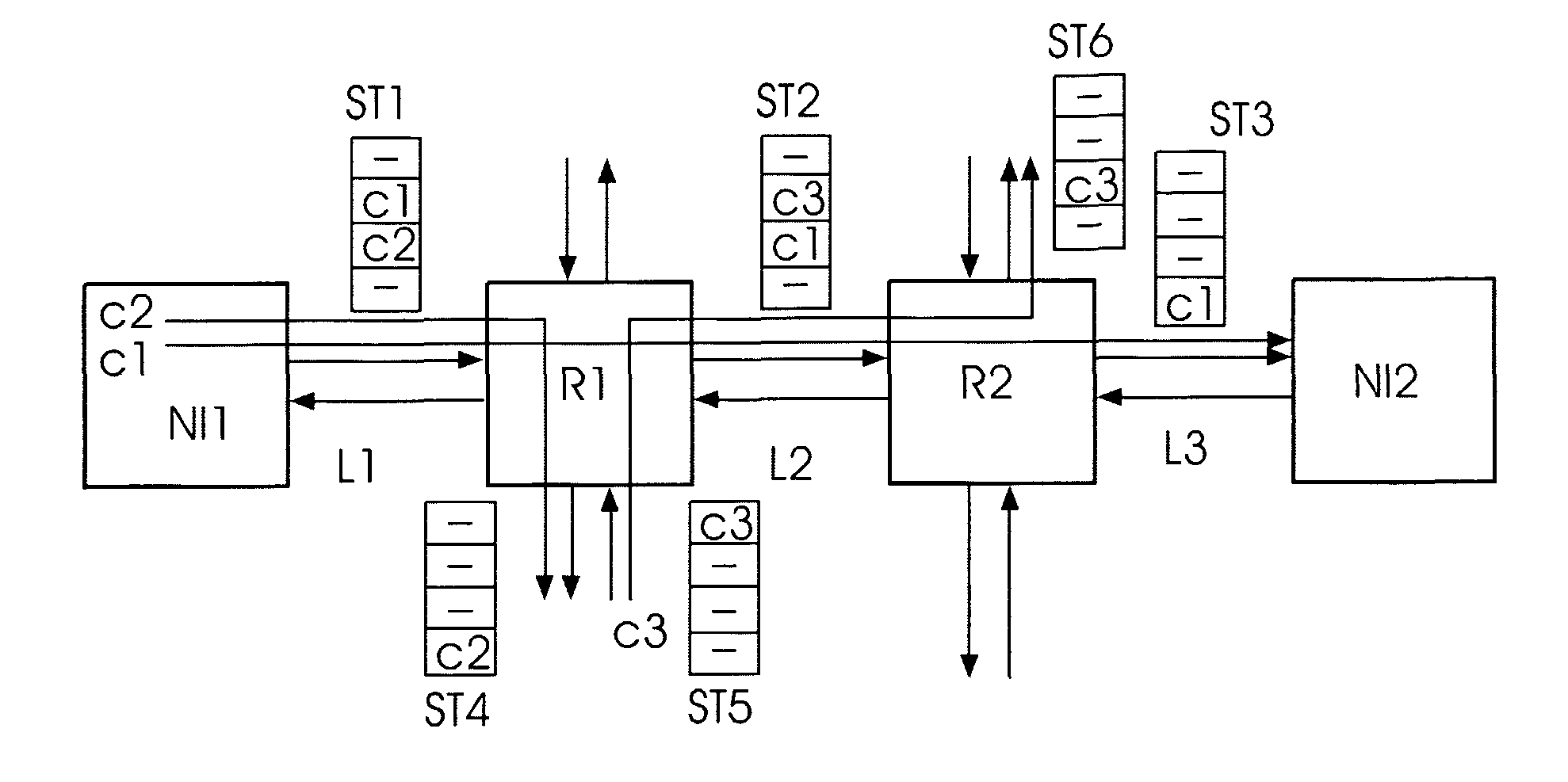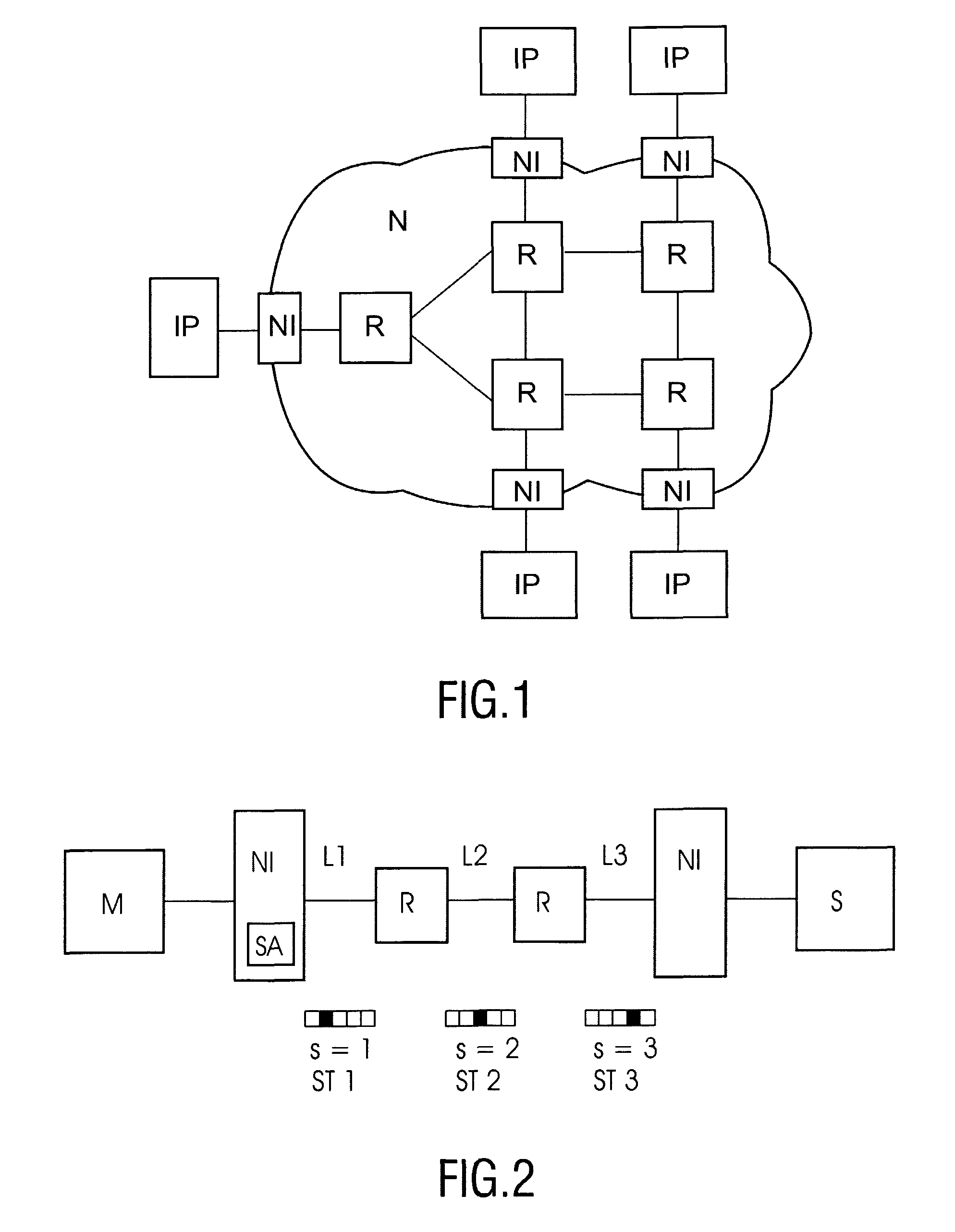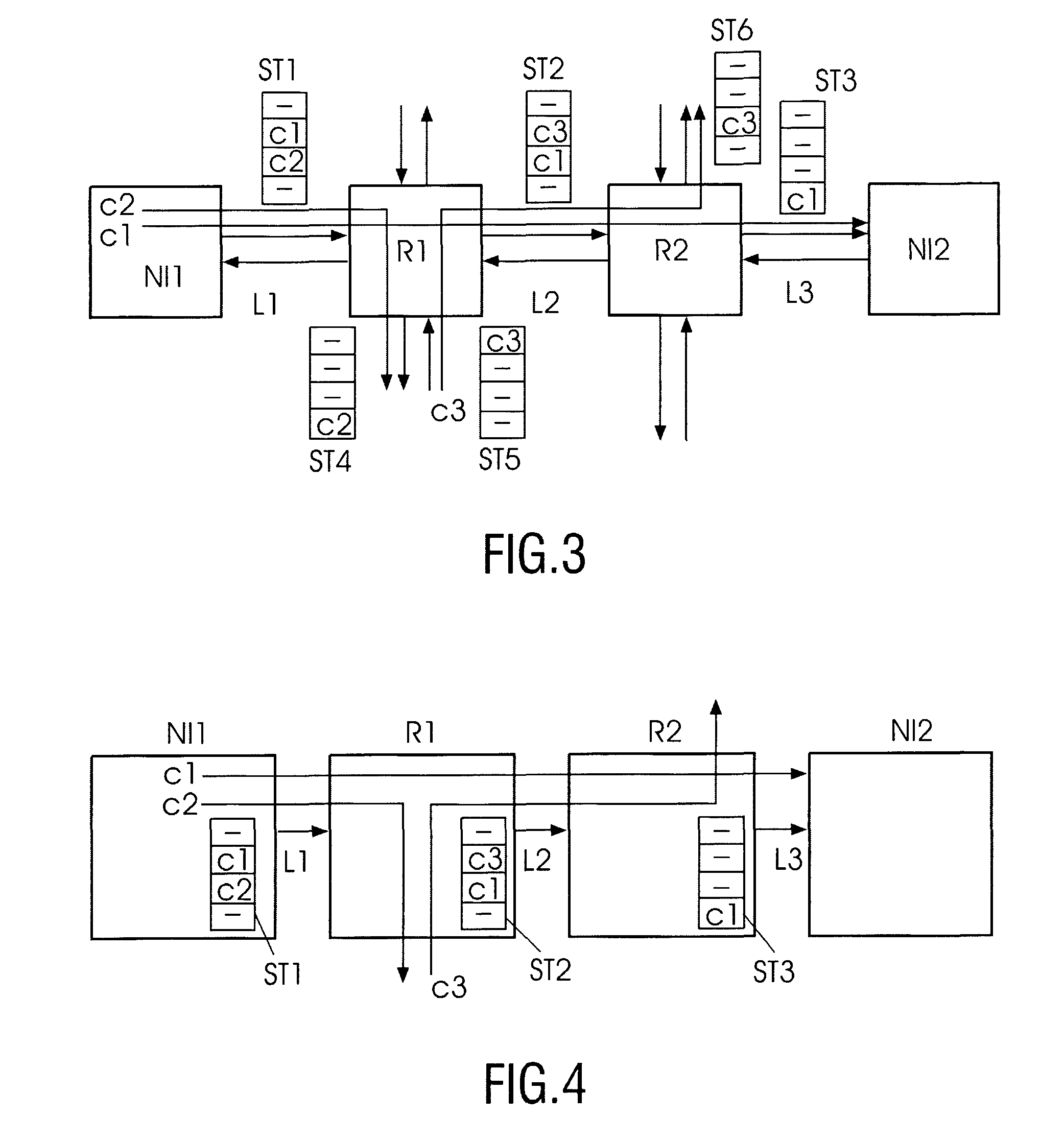Weight factor based allocation of time slot to use link in connection path in network on chip IC
a network and link technology, applied in the field of weight factor based allocation of time slot to use link in the connection path in the network on the chip, can solve the problems of large number of modules forming a large bus load, system complexity on silicon shows a continuous increase in complexity, and the way of communication is no longer practicable, so as to achieve less utilization of links, less chance to find free slots, and more freedom in finding slots
- Summary
- Abstract
- Description
- Claims
- Application Information
AI Technical Summary
Benefits of technology
Problems solved by technology
Method used
Image
Examples
third embodiment
[0052]In FIG. 6, a possible variation to the above encoding of FIG. 4 and FIG. 5 is shown. Here, the routing information is stored in the router itself (instead of the packet header). In output port slot tables ST1-ST3, slots indicate from which input data is consumed. In this way, the packet header can be omitted, leading to more throughput, at the expense of larger slot tables in the routers.
[0053]Now the actual slot allocation function is described, which may be implemented in the time slot allocation unit SA. The result leads to a slot allocation which corresponds to the slot requirements. For each link in the path of the connection, a weight is computed as a function of the bandwidth, latency, jitter priority and / or number of slots requested for each channel chi in the connection path that uses that link:
weight(link)=f(bandwidth(chi),latency(chi),jitter(chi),priority(chi), slots(chi))∀chi such that linkεchi
[0054]Alternatively, for each link in the at least one channel in the c...
second embodiment
[0072]The computation of the link weights is as described in the first code, but the channel weights are calculated differently. The idea behind this channel weight formula is to start the scheduling with the channels requiring more slots as they pass through frequently used links, i.e. going through hot spots (links with a high load, and, hence, a large slot to be reserved), and channels having long paths by given a higher weight such that they are scheduled first. The reason is that these connections have more constraints, and, therefore, if left at the end, have less chances to find free slots. As opposed to that, shorter channels going through less utilized links, have more freedom in finding slots, and can thus be left toward the end of the slot allocation.
[0073]Slots may be allocated to the channels (i.e. each connection path) in the decreasing order of their computed weights. For each requested slot, there is one slot reserved in each slot table of the links along the channe...
PUM
 Login to View More
Login to View More Abstract
Description
Claims
Application Information
 Login to View More
Login to View More - R&D
- Intellectual Property
- Life Sciences
- Materials
- Tech Scout
- Unparalleled Data Quality
- Higher Quality Content
- 60% Fewer Hallucinations
Browse by: Latest US Patents, China's latest patents, Technical Efficacy Thesaurus, Application Domain, Technology Topic, Popular Technical Reports.
© 2025 PatSnap. All rights reserved.Legal|Privacy policy|Modern Slavery Act Transparency Statement|Sitemap|About US| Contact US: help@patsnap.com



